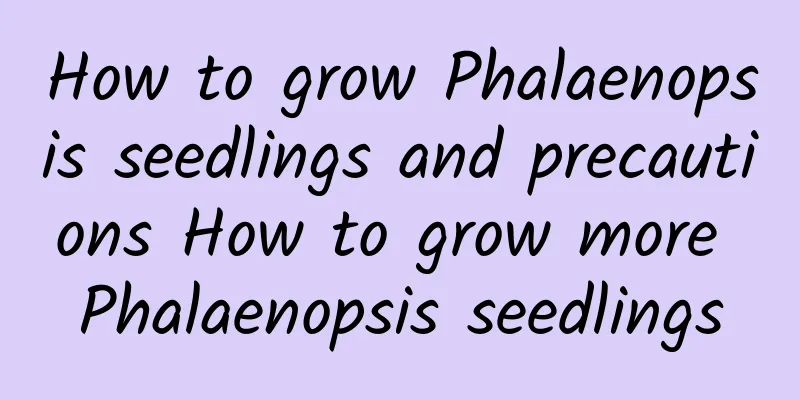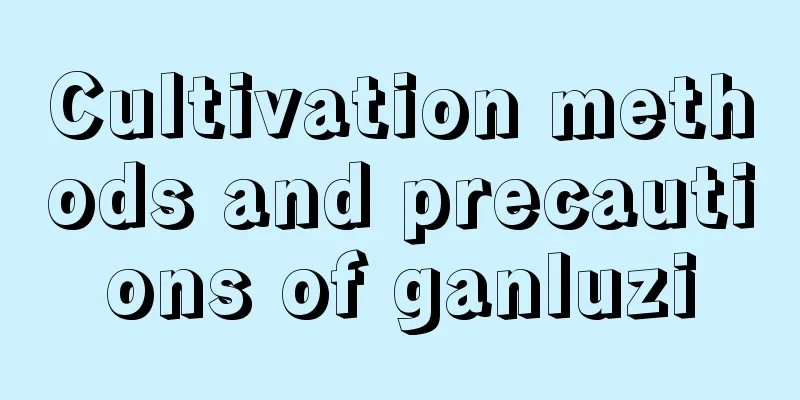Zinnia cultivation methods and precautions

1. Maintenance methods1. Temperature: Temperatures between 15 and 30 degrees are more suitable for zinnias. And because it is a plant that is neither cold-resistant nor heat-resistant, the temperature needs to be adjusted in both summer and winter. In summer, it is best not to exceed 35 degrees. In winter, try to keep the temperature around 15 degrees. 2. Watering: Zinnia is a relatively drought-tolerant plant and is afraid of waterlogging. Therefore, just keep the soil in the pot slightly dry and don't water it too much. However, in summer, due to the higher temperature, evaporation is faster, so you can water it a little bit every day. In winter, try to water as little as possible. 3. Light: It is a very light-loving plant. During its growth period, even full sun is fine. Direct sunlight will not harm it. Therefore, try not to place it in a semi-shaded place, let alone in complete darkness. 4. Soil: Its requirements for soil are mainly in terms of nutrition and air permeability. It is best to choose fertile and loose soil. 2. Breeding techniques1. Reproduction: It can be propagated by sowing. The seeds should be selected as full ones, and after selection, they need to be disinfected. The substrate should be fertile and loose, and should also be sterilized. Only then can you sow. Generally speaking, it is more appropriate to use the "on-demand" method. After sowing, cover with a layer of soil. Then, keep the temperature between 21 and 23 degrees, which will facilitate germination. 2. Repotting: Since it does not have high requirements for soil, it generally does not need to be repotted every year. However, it is not okay not to change it for a long time. Generally speaking, it can be replaced every two or three years. At the same time, try to trim the roots as much as possible. 3. Problem diagnosis and treatment1. Disease: The disease that threatens zinnia is mainly "zinnia white star disease". It causes some brown spots to appear on the leaves of the plant. It mostly harms the lower part of the leaves. Mancozeb can be used for prevention and control. At the same time, the infected leaves need to be cut off. 2. Pests: Pests may occasionally appear, such as aphids. Households can remove them by mixing laundry detergent with water. Omethoate solution can also be used. IV. Other issues1. Flower language: Its flower language varies depending on the color. If it is white, it means "kindness"; if it is yellow, it means "daily greetings". 2. Can it be raised at home? It is more suitable to be placed at home and has good ornamental value. |
<<: Is it suitable to raise succulent chicks in summer?
>>: Cultivation methods and precautions of bicolor jasmine
Recommend
A collection of flower arrangement techniques (Part 2)
Wire winding method This method can provide suppo...
How to make gardenia bloom
1. Flower soil Friends in the south may be better...
What to do after succulents bloom
1. Treatment methods 1. Prune the flower arrow: T...
How to propagate tea roses
1. Cutting method Cutting propagation of scented ...
Common orchid pests and their prevention and control methods
Common orchid pests: scale insects > symptom S...
The efficacy and function of tobacco
Ornamental value The overall root system of Nicot...
How often should Schefflera be watered? The correct watering method
How often should I water Schefflera? How often to...
Can kiwi fruit be grown in the yard?
Can I grow kiwi fruit in my yard? Kiwi fruit can ...
Is rice an oil crop?
Is rice an oil crop? Rice is not an oil crop, and...
How to raise multi-headed rubies
1. Suitable sunlight Multi-headed rubies have str...
The efficacy and function of saffron
1. Regulate endocrine Saffron can promote blood c...
How does purple bamboo survive the winter?
Specific measures temperature It is best to bring...
How much is the yield of chili pepper per mu? How much is the annual income of planting one mu of chili pepper?
Pepper yield per mu There are many varieties of c...
The reason why the leaf tips of hydroponic white palm turn black
1. Frostbite Cause: The leaf tips of hydroponic w...
How to Eat Custard Apple
Selection Sugar apple is a fruit that can be eate...









